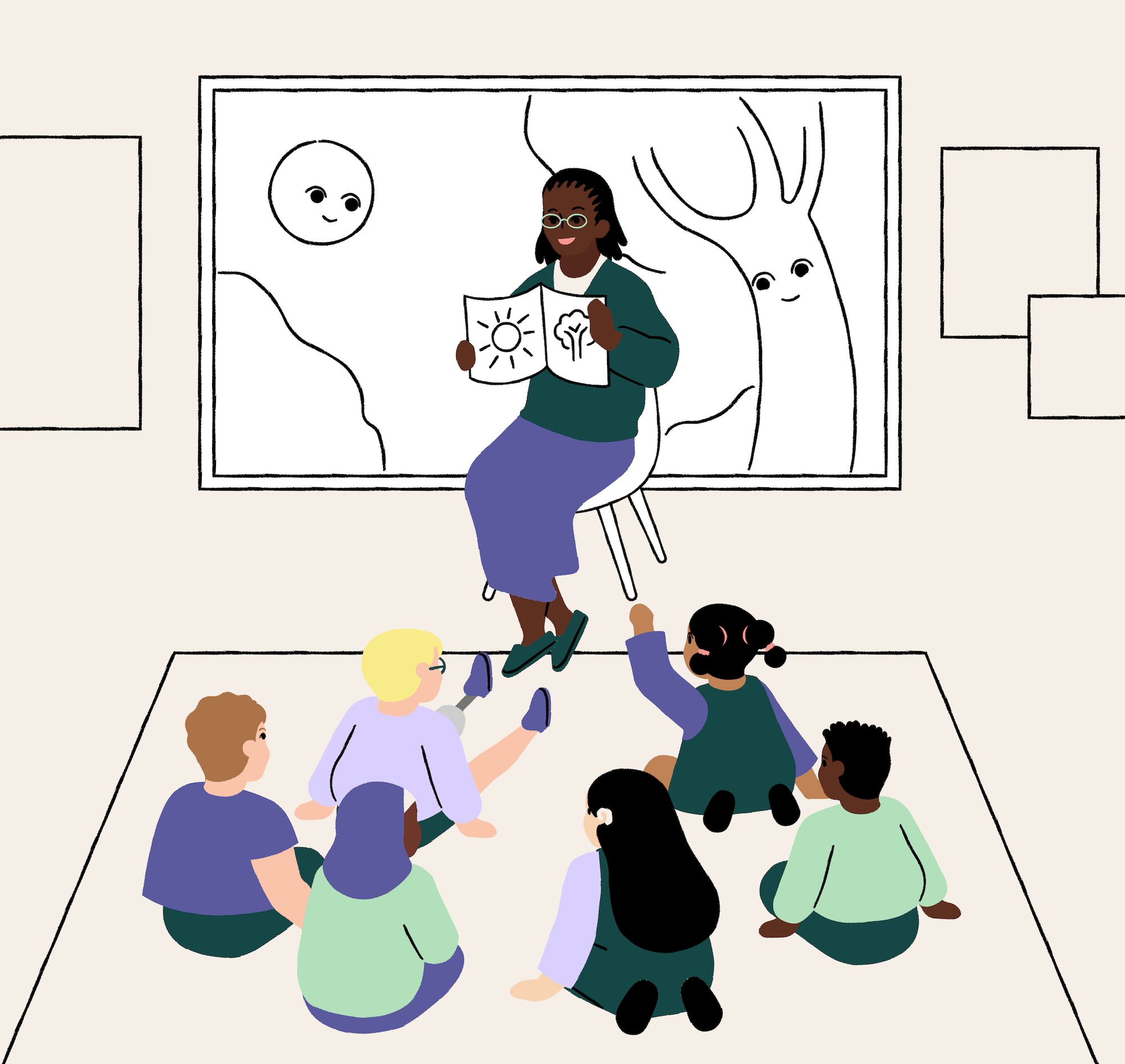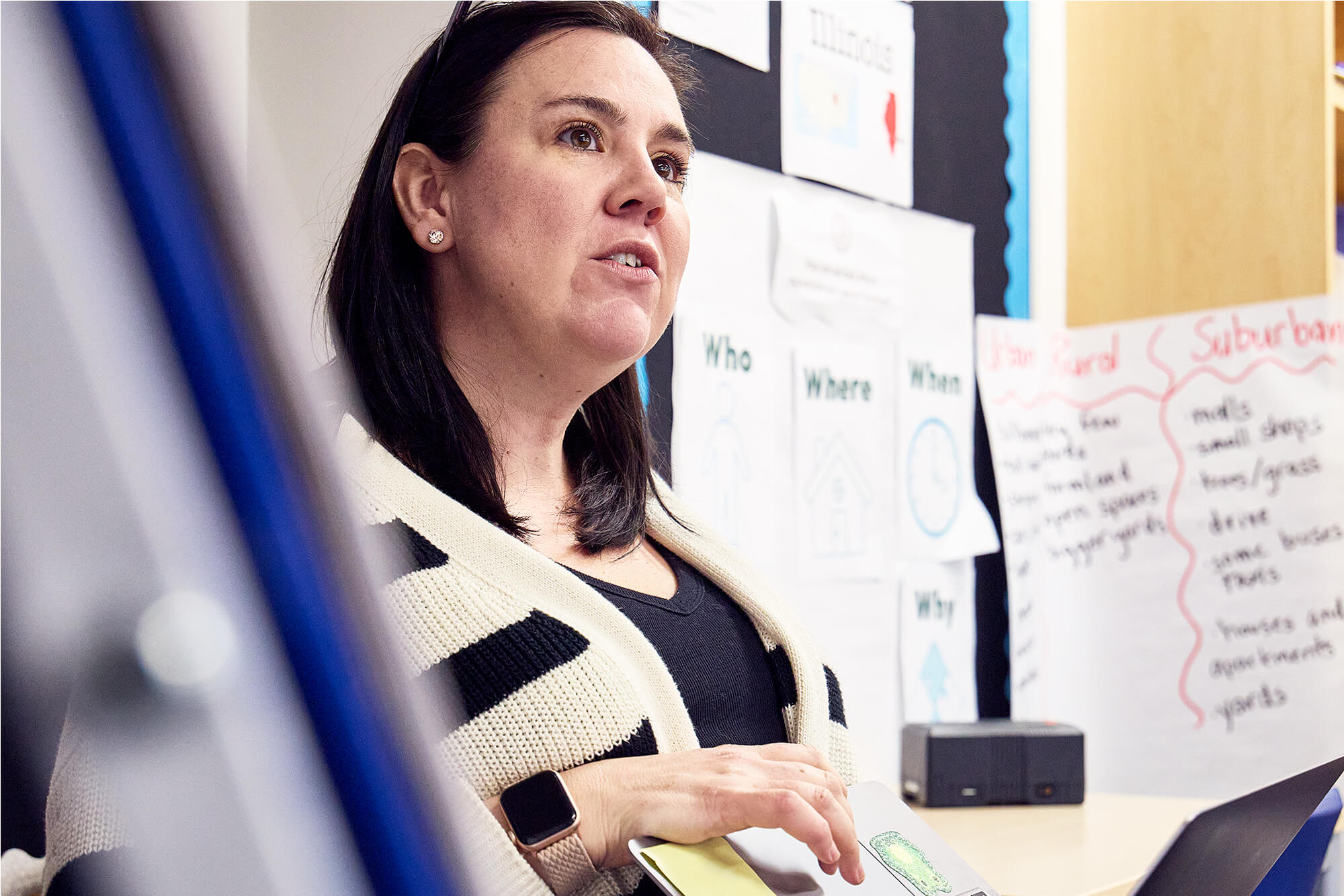The Missing Piece in Reading Comprehension: Social Studies

NOTE: There is no recording for this webinar.
The Missing Piece in Reading Comprehension: Social Studies

Reading tests don’t just measure decoding – they measure what students know. When social studies disappears from the elementary day, so does some of the context that makes reading meaningful. Research shows that restoring time for history, civics, economics, and geography strengthens comprehension and deepens literacy understanding.
Key Takeaways
The Missing Piece in Reading Comprehension: Time for Social Studies
Across the country, district and school leaders are under pressure to raise literacy achievement. From early literacy legislation to new assessments and accountability frameworks, the science of reading has taken center stage, and rightly so.
But in the scramble to prioritize foundational skills, something essential has quietly been lost: time for social studies.
In many elementary schools, social studies has been squeezed to the margins. Yet a growing body of research shows that this reduction may be undermining the very reading outcomes schools are working so hard to improve.
The question isn’t: how can we afford to give up instructional time to social studies?
The question is– how can we afford not to?
Reading comprehension is knowledge-dependent
This principle has been established across decades of research. In the landmark baseball study, researchers found that students who knew more about baseball outperformed stronger decoders who knew less, demonstrating that background knowledge is often the stronger predictor of comprehension.¹
More recent studies reinforce that pattern. A longitudinal study of more than 10,000 students found a bi-directional relationship between knowledge and reading achievement: students who knew more about the world read better, and better readers learned more over time.²
A meta-analysis reviewing 70 years of research reached the same conclusion: background knowledge consistently enhances comprehension, especially for informational texts.³
Cognitive scientists explain the relationship between background knowledge and reading comprehension through cognitive load theory: readers have limited working memory, and when they lack context, comprehension falters.4 Knowledge lightens that load, allowing students to comprehend meaning more efficiently.5
Comprehension, in other words, isn’t just a skill to practice – it’s a function of what students know.6
{{download}}
Reading assessments show how social studies matters for background knowledge
National reading assessments consistently demonstrate the need for background knowledge built from cross-disciplinary content areas.
Consider NAEP – often called The Nation’s Report Card. Although NAEP is categorized as a reading test, many of its passages draw directly from social studies content like history, geography, economics, and civics.
One publicly released Grade 4 passage, “Ellis Island: The Doorway to America,” tells the story of immigration to the United States between 1892 and 1954.10 The accompanying questions ask students to explain why the island was called a “doorway,” interpret historical cause and effect, and make inferences about fairness and opportunity. Success on this task depends not only on decoding skill, but also on knowledge of immigration history, geography, and civic ideas.
Another released passage, “Mapping the World,” traces the evolution of mapmaking and global exploration.11 Students must understand why early maps were inaccurate, how explorers contributed to geographic knowledge, and how mapmakers’ perspectives shaped what they produced. These are fundamentally historical and geographic reasoning skills – skills developed through learning social studies.
Even literary selections draw on background knowledge. In “A City Tossed and Broken,” a fictional diary set during the 1906 San Francisco earthquake, students must use historical and social context to interpret events and vocabulary.12
In each case, comprehension hinges on students’ familiarity with disciplinary knowledge – immigration, geography, civic life, or historical settings – not simply their ability to sound out words.
NAEP’s own Reading Framework confirms their ELA item design depends on cross-disciplinary knowledge: “Informational texts include selections from content areas such as science, social studies, and the arts. The ability to understand and use such texts depends on prior knowledge of the topic.”13
These examples make clear that when we talk about reading comprehension, we’re already talking about knowledge – and much of that knowledge is built in the social studies classroom.
How cutting social studies affects reading growth
Despite this evidence, the structure of the elementary day often leaves little time for the subjects that build essential knowledge. Research shows that time devoted to social studies has declined by more than 30 percent in U.S. elementary classrooms since the early 2000s.7 Few classrooms meet the Council of Chief State School Officers’ recommendation of 45 minutes per day.8
That loss of instructional time has consequences for reading development. A longitudinal analysis of national data found that students who spent more time in social studies showed stronger growth in reading comprehension, while additional time in ELA alone had little measurable effect.9 The finding was particularly pronounced for students from historically marginalized backgrounds – those who most need school to be the source of background knowledge and vocabulary exposure.
The reason is clear: comprehension assessments, from classroom reading tests to the National Assessment of Educational Progress (NAEP), rely on the meaningful context, knowledge, and vocabulary social studies provides.
Integration, not competition
Restoring time for social studies doesn’t mean sacrificing literacy instruction. In fact, the evidence suggests the opposite: students become stronger readers when literacy is integrated with knowledge-rich content.
A meta-analysis found that when literacy instruction was embedded in social studies or science, students showed significant gains in vocabulary, comprehension, and content knowledge.14 Similarly, a large-scale randomized controlled trial of a project-based, literacy-integrated social studies curriculum showed that second graders who engaged in integrated learning outperformed peers in both social studies achievement and informational reading.15
Even at a systems level, the pattern holds. Increasing time in social studies was associated with greater reading growth.16 When it is integrated and protected, they gain not only knowledge but also the disciplinary habits of mind that deepen understanding: questioning evidence, interpreting sources, and recognizing perspective.
A more complete science of reading
The science of reading is sometimes simplified to being about phonics and decoding with phonics and decoding. These are essential components of literacy, but the science of reading encompasses far more. It also illuminates how students make meaning from text, showing that comprehension depends on the knowledge and vocabulary they bring to their reading.
Knowledge-building subjects like social studies are not peripheral to literacy; they are central to it. When students have time each day to explore the people, places, and ideas that shape their world, they gain the very context that makes reading meaningful. Reclaiming time for social studies isn’t just about balance, it’s about aligning literacy practice with the full science of how comprehension develops.
Resources
(1) Recht, D. R., & Leslie, L. (1988). Effect of prior knowledge on good and poor readers’ memory of text. Journal of Educational Psychology, 80(1), 16–20. https://doi.org/10.1037/0022-0663.80.1.16
(2) Hwang, H., McMaster, K. L., & Kendeou, P. (2023). A longitudinal investigation of directional relations between domain knowledge and reading in the elementary years. Reading Research Quarterly, 58(1), 59–77. https://doi.org/10.1002/rrq.481
(3) Smith, J., Snow, P., Serry, T., & Hammond, L. (2021). The role of background knowledge in reading comprehension: A review. Frontiers in Psychology, 12, 673705. https://doi.org/10.1080/02702711.2021.1888348
(4) Willingham, D. T. (2018). The reading mind: A cognitive approach to understanding how the mind reads. Jossey-Bass.
(5) Sweller, J. (2011). Cognitive load theory. Psychology of Learning and Motivation, 55, 37–76. https://doi.org/10.1016/B978-0-12-387691-1.00002-8
(6)Hirsch, E. D. (1987). Cultural literacy: What every American needs to know. Houghton Mifflin.
(7) Fitchett, Paul & Heafner, Tina. (2010). A National Perspective on the Effects of High-Stakes Testing and Standardization on Elementary Social Studies Marginalization. Theory and Research in Social Education - Theory & Research in Social Education, 38, 114-130. https://doi.org/10.1080/00933104.2010.10473418
(8) Council of Chief State School Officers. (2018). Call to action: Reversing the marginalization of K–5 social studies. CCSSO Social Studies Collaborative. https://www.ccsso.org
(9) Tyner, A., & Kabourek, S. (2020). How social studies improves elementary reading. Washington, DC: Thomas B. Fordham Institute. https://fordhaminstitute.org/national/resources/social-studies-instruction-and-reading-comprehension
(10) National Center for Education Statistics (NCES). (2022). “Ellis Island: The Doorway to America.” In The NAEP Questions Tool – Grade 4 Reading Released Items. U.S. Department of Education. https://www.nationsreportcard.gov/reading/sample-questions/?grade=4
(11) National Center for Education Statistics (NCES). (2022). “Mapping the World.” In The NAEP Questions Tool – Grade 4 Reading Released Items. U.S. Department of Education.
(12) National Center for Education Statistics (NCES). (2022). “A City Tossed and Broken.” In The NAEP Questions Tool – Grade 4 Reading Released Items. U.S. Department of Education.
(13) National Assessment Governing Board (NAGB). (2019). Reading framework for the 2019 National Assessment of Educational Progress. Washington, DC. https://www.nagb.gov/content/dam/nagb/en/documents/publications/frameworks/reading/2019-reading-framework.pdf
(14) Hwang, H., Cabell, S. Q., & Joyner, R. E. (2021). Effects of Integrated Literacy and Content-area Instruction on Vocabulary and Comprehension in the Elementary Years: A Meta-analysis. Scientific Studies of Reading, 26(3), 223–249. https://doi.org/10.1080/10888438.2021.1954005
(15) Duke, N. K., Halvorsen, A.-L., Strachan, S. L., Kim, J., & Konstantopoulos, S. (2020). Putting PjBL to the Test: The Impact of Project-Based Learning on Second Graders’ Social Studies and Literacy Learning and Motivation in Low-SES School Settings. American Educational Research Journal, 58(1), 160-200. https://doi.org/10.3102/0002831220929638
(16) Shanahan, T., & Shanahan, C. (2008). Teaching disciplinary literacy to adolescents: Rethinking content-area literacy. Harvard Educational Review, 78(1), 40–59. https://doi.org/10.17763/haer.78.1.v62444321p602101
Keep reading
See more of this series
%20(1).webp)
K-5 Social studies built for literacy
Learn more about Inquiry Journeys, our elementary social studies curriculum that supports literacy development.
Start your journey
Inquiry Journeys, inquirED's K-5 social studies curriculum, engages students in inquiry-based learning, strengthens literacy skills, and supports teachers every step of the way.
inquirED was founded by teachers with the mission of bringing inquiry-based social studies to every classroom. Inquiry Journeys, inquirED’s elementary social studies curriculum, is used in schools and districts across the country to help students develop deep social studies content knowledge and build the inquiry skills that are essential for a thriving democracy.








